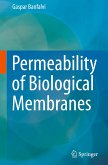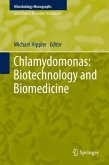Microbial physiology, biochemistry and genetics allowed the formulation of concepts that turned out to be important in the study of higher organisms. In the first section, the principles of bacterial growth are given, as well as the description of the different layers that enclose the bacterial cytoplasm, and their role in obtaining nutrients from the outside media through different permeability mechanism described in detail. A chapter is devoted to allostery and is indispensable for the comprehension of many regulatory mechanisms described throughout the book. Another section analyses the mechanisms by which cells obtain the energy necessary for their growth, glycolysis, the pentose phosphate pathway, the tricarboxylic and the anaplerotic cycles. Two chapters are devoted to classes of microorganisms rarely dealt with in textbooks, namely the Archaea, mainly the methanogenic bacteria, and the methylotrophs. Eight chapters describe the principles of the regulations at the transcriptional level, with the necessary knowledge of the machineries of transcription and translation. The next fifteen chapters deal with the biosynthesis of the cell building blocks, amino acids, purine and pyrimidine nucleotides and deoxynucleotides, water-soluble vitamins and coenzymes, isoprene and tetrapyrrole derivatives and vitamin B12. The two last chapters are devoted to the study of protein-DNA interactions and to the evolution of biosynthetic pathways. The considerable advances made in the last thirty years in the field by the introduction of gene cloning and sequencing and by the exponential development of physical methods such as X-ray crystallography or nuclear magnetic resonance have helped presenting metabolism under a multidisciplinary attractive angle.
"Written by one of the pioneers of the field, this is a unique textbook that presents many topics from the broader area of microbial physiology. ... the work contains a large table of contents, a list of over 200 abbreviations in the front matter, and is well indexed with about 700 terms. ... Summing Up: Recommended. Upper-division undergraduates through researchers and faculty." (L. C. Davis, Choice, Vol. 54 (4), December, 2016)








